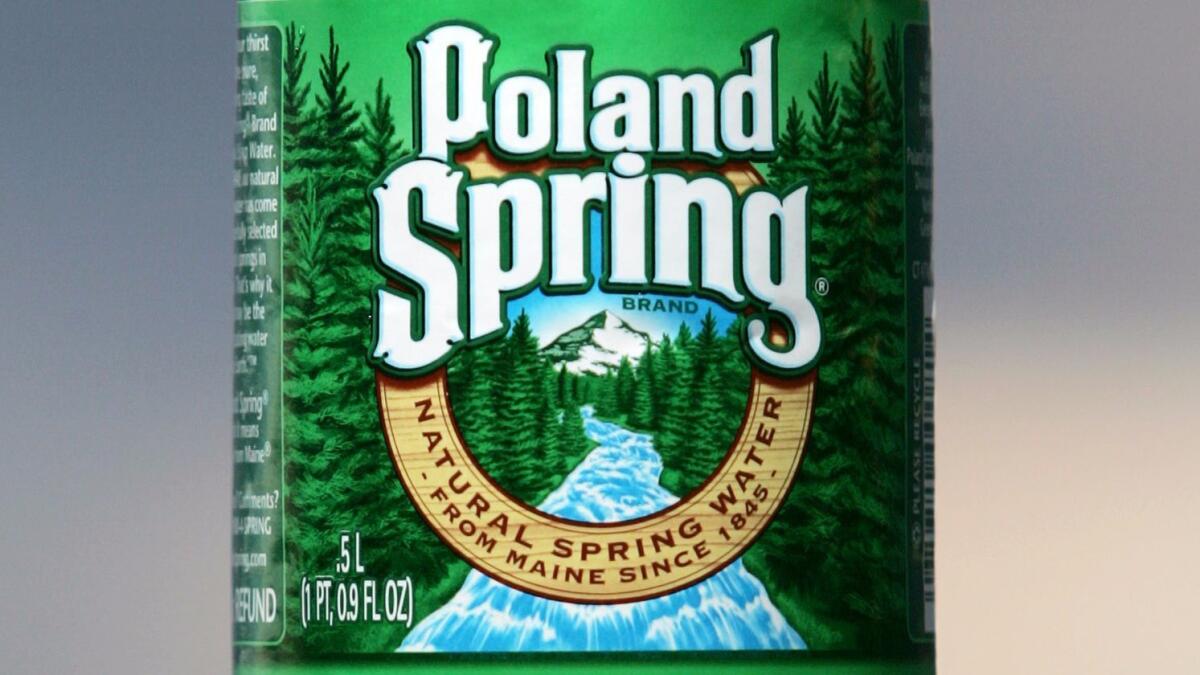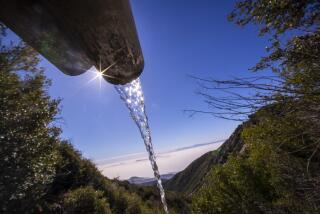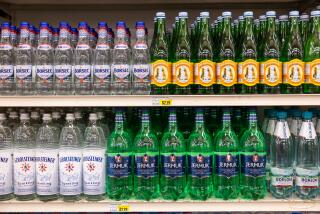‘Not one drop’ of Poland Spring bottled water is from a spring, lawsuit says

- Share via
Poland Spring, the country’s bestselling bottled water, is “a colossal fraud,” according to a class-action lawsuit.
The lawsuit, filed last week in Connecticut, alleges that instead of spring water, parent company Nestle Waters North America has been selling billions of gallons of groundwater to its customers.
“Not one drop of Poland Spring Water emanates from a water source that complies with the Food and Drug Administration definition of ‘spring water,’” the lawsuit says.
And, it goes on: “the famous Poland Spring in Poland Spring, Maine, which defendant’s labels claim is a source of Poland Spring Water, ran dry nearly 50 years ago.”
According to the Food and Drug Administration, spring water must come from an underground source and flow naturally to the earth’s surface. But spring water doesn’t have to be literally collected at the spring — it can be pumped out from a hole in the ground. A spokeswoman for Nestle Waters North America said its water meets all federal and state guidelines for spring water.
“Poland Spring is 100% spring water,” the spokeswoman said in an email. “The claims made in the lawsuit are without merit and an obvious attempt to manipulate the legal system for personal gain.”
The lawsuit, which comes as Nestle expands its operations in Maine, is the latest in a string of legal actions against bottled-water companies. In 2003, Nestle agreed to pay $10 million to charity to settle a similar class-action lawsuit that alleged it falsely advertised Poland Spring water. But the company maintained that it had not been deceptive in its practices, and it did not change the way it sources its water.
“Most of Nestle’s waters are pumped from the ground, but the bigger issue [is] that the regulatory definition of what really counts as spring water is really weak,” said Peter Gleick, a scientist and president emeritus of the Pacific Institute, a nonprofit policy research center in Oakland. “No one is really looking over the shoulders of the bottled-water companies.”
Bottled-water sales have soared to record highs in recent years as Americans cut back on sugary drinks. Annual sales of bottled water grew 10% last year to $16 billion, surpassing sales of carbonated sodas for the first time, according to Beverage Marketing Corp., a New York research and consulting firm.
Nestle has expanded its water business. The Swiss company — which recently moved its U.S. headquarters to the Washington, D.C., area from Glendale — oversees a dozen brands of still and sparkling water, including Deer Park, Acqua Panna, Perrier and San Pellegrino.
Poland Spring, its website says, comes from “some pretty incredible springs — eight of them to be exact.” The site includes a map of the appropriately named sites, including Cold Spring, Clear Spring and Evergreen Spring. “We carefully select each spring source in Maine based on such things as geologic formation, mineral composition, quality and taste,” it says.
The lawsuit, however, alleges that there is not “any historical evidence for six of [Nestle’s] alleged springs, and two are former springs that no longer exist.”
Instead, the suit says, “the labels depict pristine scenes of water flowing down a verdant hillside or a forest pond when, in fact, the vast bulk of the water is drawn from wells in low-lying populated areas near potential sources of contamination.”
Nestle’s six groundwater collection sites in Maine, the suit says, “are near a present or former human waste dump, landfill, fish hatchery or toxic petroleum dump site.”
The class-action lawsuit has 11 plaintiffs and is led by Vermont resident Mark Patane, who says he has spent hundreds of dollars buying Poland Spring water since 2003.
“Had he known that Poland Spring Water was ordinary groundwater,” the complaint says, “he would have consumed lower-cost bottled water products or filtered tap water.”
Bhattarai writes for the Washington Post.
More to Read
Inside the business of entertainment
The Wide Shot brings you news, analysis and insights on everything from streaming wars to production — and what it all means for the future.
You may occasionally receive promotional content from the Los Angeles Times.










